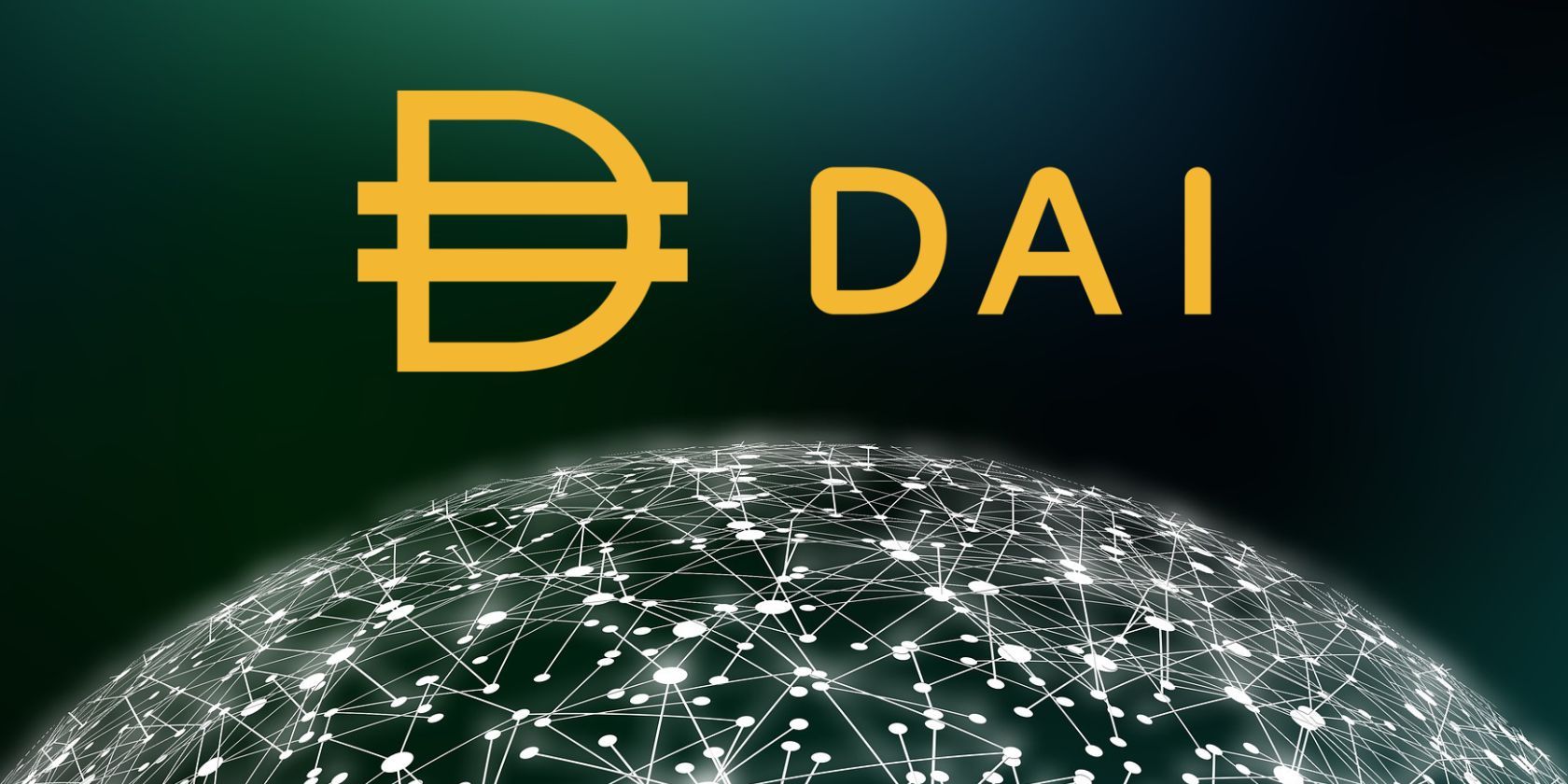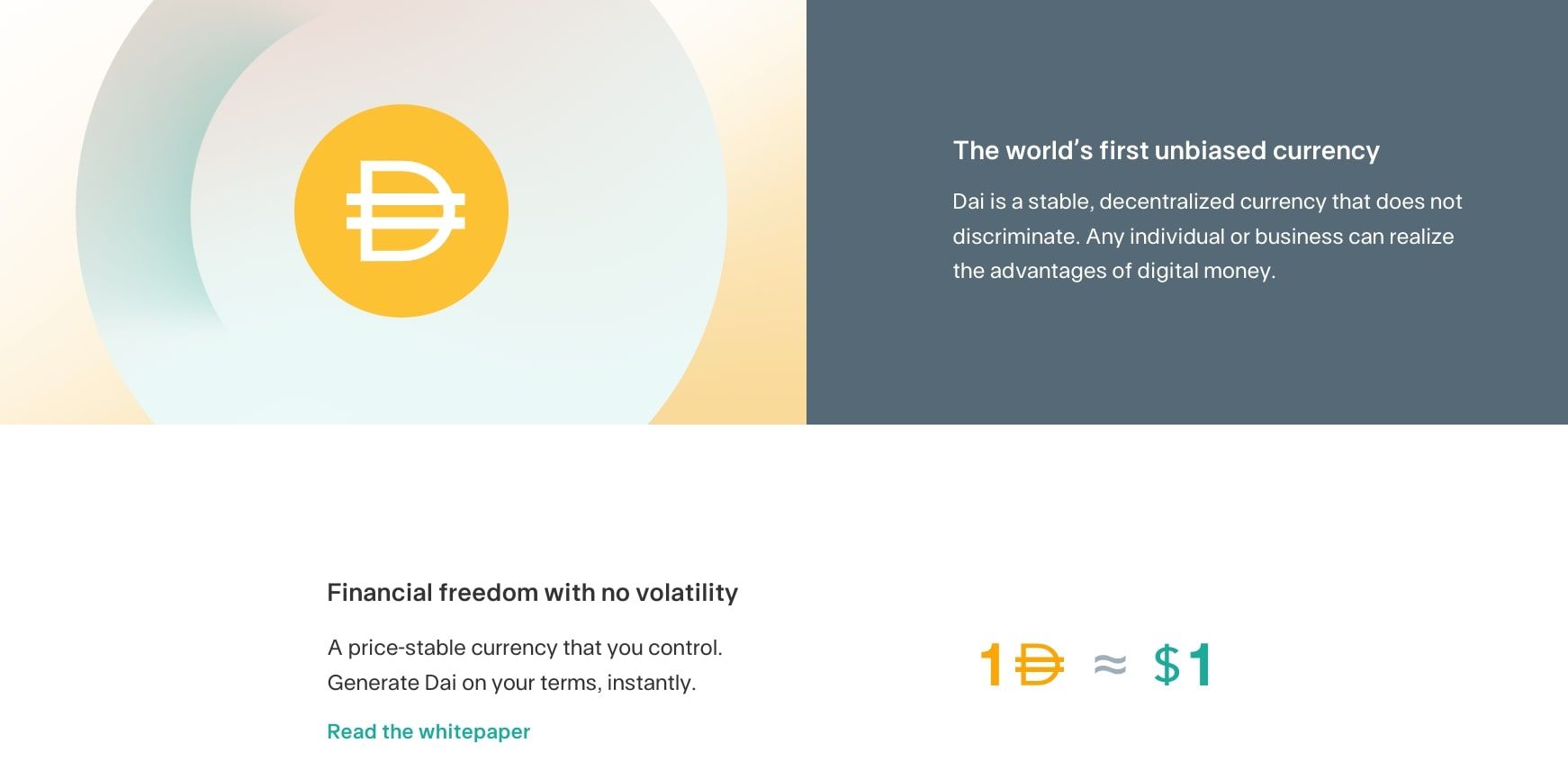Today, the cryptocurrency industry is rife with thousands of different coins and tokens, all of which claim to offer investors something, be it utility, store of value, or otherwise.
One such cryptocurrency, Dai (DAI), has risen through the ranks to become one of the world's most popular coins. But what exactly is DAI, how does it work, and why is it now so well-known?
What Is Dai (DAI)?
Dai is a stablecoin that was launched in 2017 as part of the MakerDAO ecosystem. MakerDAO is a peer-to-peer cryptocurrency lending platform that was launched two years prior to Dai. Individuals can both borrow and lend funds in the form of DAI using MakerDAO, and the platform is fully decentralized.
MakerDAO currently stands as one of the most popular DeFi projects in the crypto industry, along with other big players like Uniswap and Yearn Finance. In fact, MakerDAO currently has over two million ETH locked from user deposits, so it's safe to say it's become a widely successful DApp.
MakerDAO and Dai exist on the Ethereum blockchain, as is the case for many other stablecoins like Tether and USD Coin. This makes Dai an Ethereum (ERC-20) token you can buy on most crypto exchanges, such as Coinbase, Binance, and KuCoin. And, because Dai is an ERC-20 token, it can be stored in a wide range of well-known wallets, including MetaMask, Atomic Wallet, and Exodus. MakerDAO's existence on the Ethereum blockchain also allows it to support smart contracts, which we'll discuss later.
The MakerDAO DApp
Underpinning the entire MakerDAO ecosystem is the Maker Protocol, also known as the Multi-Collateral Dai (MCD) system. This borrowing system requires crypto collateral deposits on behalf of the user. When collateral is deposited, DAI is generated. Each Dai token is collateralized accordingly, with the token being deposited by the borrower.
Initially, users could only generate DAI using Ether as collateral, but this has changed recently. You can now use various cryptos as collateral, including Basic Attention Token, Compound Token, and USD Coin, all of which exist on the Ethereum blockchain. And, as more collateral cryptos are added to the MakerDAO system, the risk of DAI losing its peg decreases.
However, to receive DAI via MakerDAO, over-collateralization is required. This means that you have to deposit more in Maker's collateral vaults, or the Maker Vaults, than you get back in return. These vaults are smart contracts that lock up the collateral assets deposited. Then, if the price of the collateral crypto drops, you'll need to deposit more of it to keep your DAI.
Note that this is collateral, so you're not losing money by depositing it in the Maker Vaults. However, if your collateralized crypto drops enough in value while it is deposited in the vaults, MakerDAO will require you to liquidate it. And, if you want to liquidate your collateral by choice, you'll need to return the DAI you initially received from MakerDAO.
Is Dai Algorithmic?
While Dai itself is pegged to the U.S dollar in a 1:1 ratio, it is not backed by it, nor is it backed by any other kind of physical reserve. In fact, Dai is solely backed by other cryptocurrencies. This is another factor that differentiates it from other top stablecoins like Tether and USD Coin. Dai keeps its peg through collateralization.
You could technically call Dai an algorithmic stablecoin, but this isn't strictly true because it is collateralized. This potentially makes DAI a less risky investment, as non-collateralized algorithmic stablecoins can come crashing down worryingly easily (as you may have seen in the LUNA/UST crash).
On top of this, DAI is a totally decentralized asset, unlike many other popular stablecoins like Tether. Because of this, no central authority determines the circulation of Dai. Given that Dai is a stablecoin, it's worth keeping in mind that it isn't a crypto that's going to shoot up in value and make its investors a huge profit. Stablecoins are designed to resist the market fluctuations affecting typical cryptos via their peg. This makes Dai more reliable in the long-term but not a get-rich-quick asset.
But MakerDAO isn't just a lending platform. People can also earn interest by locking their DAI funds in a Dai Savings Rate (DSR) smart contract. At the moment, MakerDAO offers a rate of 0.1% on deposited DAI.
The Maker (MKR) Token
MakerDAO also has an additional ERC-20 token, known as Maker (MKR). This acts as a governance token, meaning that those who own MKR funds can vote within the MakerDAO ecosystem to have their say in the changes that are made and how the project progresses. For example, MKR holders could vote on altering the DSR savings rate and liquidation penalty or adding new collateral cryptos.
This system of governance allows the Maker Protocol to be controlled by its users instead of a central authority. Maker currently has a pretty high value of over $900 and, as you may have guessed, is not pegged to any other asset, so it is therefore not a stablecoin like Dai. MKR can also be used as a utility token to pay interest fees on the MakerDAO platform.
But Maker has one additional purpose, and that's something of a desperate remedy. We mentioned earlier that there is always a chance of one's deposited collateral lowering in price, and if this price drop passes a certain threshold, something has to be done. Of course, liquidation of collateral is the first plan of action, but if too many loans are being liquidated all at once, more MKR is created and then sold so that loans can be paid off. So, both DAI and MKR are crucially important in the operation of MakerDAO.
The Dai and MakerDAO Ecosystem
The cryptocurrency industry is notoriously risky and unpredictable, so the option of stablecoin investment allows individuals to have a little more faith in the long-term trajectory of their funds. In addition, Dai's clear focus on reliability and stability makes it a particularly solid option for those who want to invest in cryptocurrency to use it in the DeFi world. And, as the DeFi industry continues to diversify and flourish, we may be seeing Dai and MakerDAO become even more prevalent.


